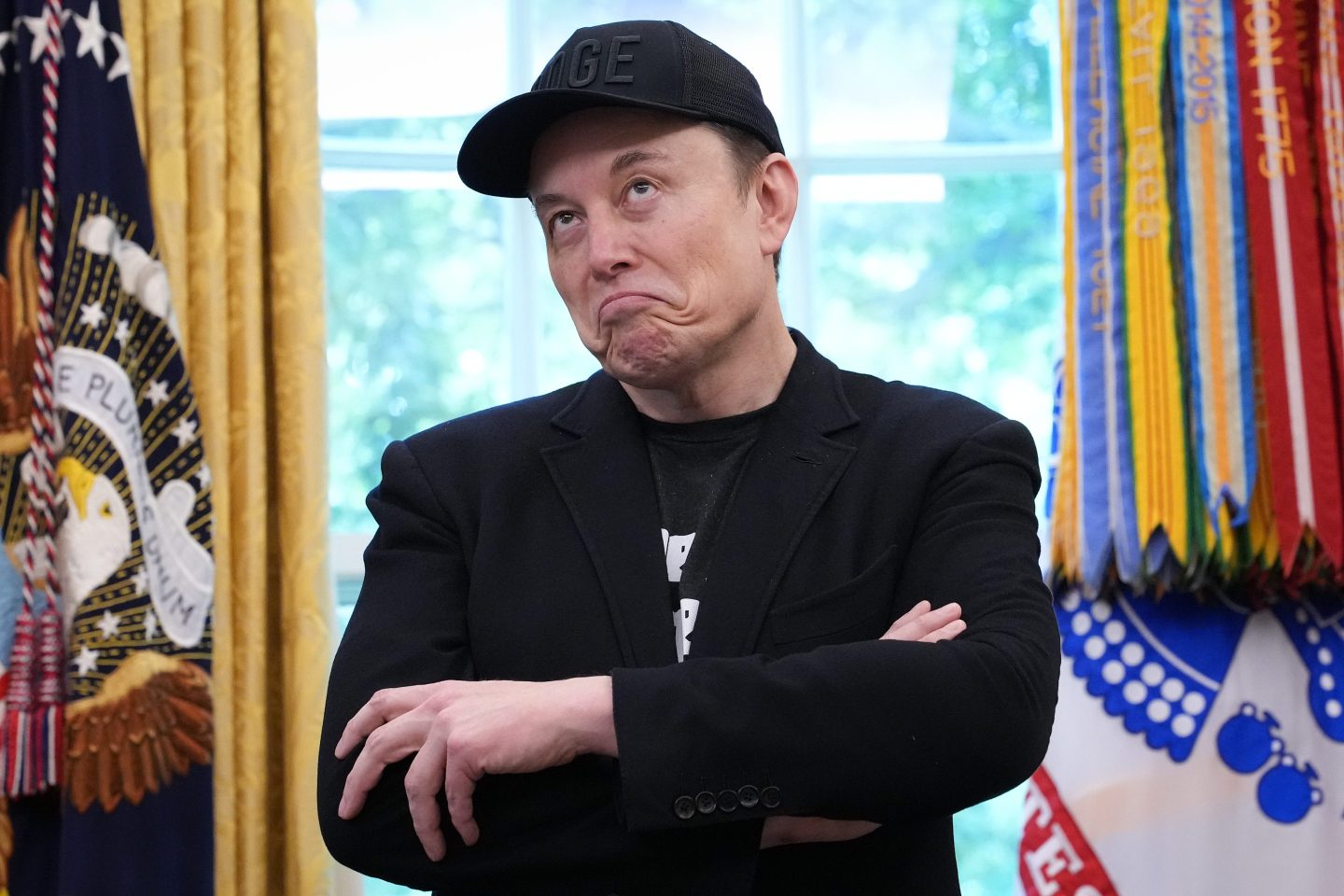There were two leaders I emulated along HubSpot’s path from $0 to $25 billion: Steve Jobs and Jerry Garcia. A lot of ink has been spilled about Jobs, but for this CEO, Garcia was just as influential. He had a fundamentally novel approach to pretty much everything. Here are some highlights of what I learned from him in hopes you can too.
Not just passion, OBSESSION
These days, I spend a lot of my time coaching Sequoia Capital’s startup founders on their journey to becoming scaleup CEOs. As part of that journey, I’ve gone deep on the “trillion dollar club CEOs,” founder/CEOs of companies that reached a trillion dollar valuation at some point. All of these folks — Steve Jobs, Bill Gates, Jensen Huang, Jeff Bezos, Larry Page, Mark Zuckerberg, Elon Musk — have one common trait: pure, all-consuming obsession. They aren’t just motivated; they aren’t just passionate; they’re obsessed with their craft. So was Jerry Garcia.
Garcia played 2,314 concerts with the Grateful Dead over 30 years. It was a grueling set of annual marathons in and of itself. In between these marathons he turned around and played another 1,500 concerts with his side project, the Jerry Garcia Band. He also wrote over 100 of those songs he played with his collaborator, Robert Hunter.
His daughter remembers him spending time with the family watching TV and playing chords on his unplugged guitar constantly; his bandmates recall him noodling on the guitar during almost every meal. He lived and breathed his art. That kind of deep, relentless obsession is what I see in the best CEOs I work with — it’s a key indicator of future success.
First Principles Thinking
One thing I tried to do at HubSpot — sometimes successfully, sometimes not — was to always question conventional wisdom. We’d always ask: “If we were designing this from scratch, ignoring precedent, how would we do it?” Garcia lived this mindset.
Where most 1960s bands were cutting 3-minute singles from the studio, the Dead were jamming 30 minute soliloquies on the stage several nights a week.
Where their peers all fit neatly into the rock genre, the Dead created their own, the jam band. Where album sales were the revenue engine du jour, the Dead made their living on live shows.
Where everyone was outsourcing their ticket sales to middle men (i.e. Ticketmaster), the Dead cut out the middle man, built their own ticketing operation, and put its fans’ experience first.
Where radio placements were the industry’s marketing vehicle, the Dead created a freemium, viral distribution model letting its fans trade its live shows via cassette tapes.
This first-principles approach made their business — and their art — profoundly different.
I think CEOs should pick their battles where they re-think vs follow, but imho, there needs to be a whole lot more re-thinking going on.

Spike-y (Not Well Rounded) Talent
When scaling a company, it’s a huge temptation to hire well “rounded” executive talent. The bigger your company gets, the more people you include in the interview process, the more likely you are to hire the candidate with the least weaknesses as opposed to the candidate with a combination of spike-y strengths and spike-y weaknesses. I’ll give you an example. Lets say a company has 8 internal folks interview candidate A and candidate B. For candidate A, half of them are 4/10 and half are 10/10. For candidate B, all of them are 7/10’s. Almost inevitably, the scaling company goes with candidate B, the one with the “least weaknesses.” More often than not, that company is looking for a replacement for candidate B 18 months later.
Ok, so what about Garcia? When he was forming the band, he went with all A’s. The band was formed a few years after the Beatles and the Rolling Stones in the first phases of the rock’n’roll era. Garcia himself was a bluegrass banjo player. When selecting bandmates, he steered clear of folks like himself. His bass player, Phil Lesh, was a classically trained jazz trumpet player that Garcia convinced to learn the bass. His keyboard player, Ron “Pigpen” McKernan, was a bluesman. One of his drummers (they had 2!) was literally a drum majorette in a marching band.
Jerry built a spikey team and stayed away from hiring folks in his own image. It’s the spikes — not the well-roundedness — that drive breakthroughs in the companies I work with.
Teamwork Actually Does Make The Dream Work
This spike-y set of musicians had to work together in a way that no other band of that era had ever done before. They played similar songs as the Beatles and The Rolling Stones, in fact they often covered their songs, but they played them in a novel way. The Beatles and the Rolling Stones played structured 3 minute songs. The Grateful Dead played unstructured 30 minute masterpieces. They played rock’n’roll music more like a jazz band. In fact, they never played the same set list twice and they never played the same song the same way.
This type of collaboration involved a level of trust and teamwork that other bands didn’t require. Jerry was heavily featured in these collaborations, but it involved brilliant interplay between each player in the band. Jerry described his role this way, “I’m not the best at anything. I’m not a great musician, a great songwriter. I just have this ability to blend in with whatever is going on.”
Low Key Leader
The stars of his era were flashy and attention seeking, think Mick Jagger strutting around stage, Robert Plant’s outfits and long mane, Jim Morrison with his shirt off on stage, etc. Garcia presented himself as a humble musician. Quietly coming on stage with the same simple jeans and black t-shirt thousands of times.
A lot of CEOs have a sort of false modesty that is relatively easy to see through and is kind of cringeworthy. Garcia’s modesty was real. He was shy and didn’t like the spotlight and his persona to match what was actually going on inside him.
I think this is the way to go for CEOs. The ride for me at HubSpot was always two steps forward, one step back, two steps forward, one step back, etc. The job truly humbled me. I see “some” early stage CEOs strutting like Jagger. When the one step back happens, that won’t age well.
Succession Superhero
The Grateful Dead dealt with three deaths of their keyboard players over their 30 years!! Each time, they did a masterful job of recruiting a new keyboard player that added something new and special to the band.
After Jerry’s death in 1995, the band seemed finished…until nearly 20 years later, a young guitarist — John Mayer, a pop icon — was recruited to form Dead & Co. To many, including me, this seemed sacrilegious. But when you listened, you heard someone honoring the tradition while adding his own voice.
It’s a perfect analogy for companies navigating succession. If you find someone who brings their own style while honoring the past, renewal is not only possible — it can be powerful. Microsoft’s transformation under Satya Nadella after going sideways with Steve Ballmer is a perfect example of this.
Prince of Palo Alto
The Grateful Dead were founded in Palo Alto and had its first “real” concert at Stanford University in the middle of the 1960s. This was a place and time in history of tremendous creativity that grew out of the acid test parties, the beatnik poets, and the Summer Of Love. The Grateful Dead were the soundtrack of that era and were born of this primordial soup.
I don’t think it is a coincidence that this free wheeling, free thinking, free loving place was also the home of what was later termed silicon valley. I see the ethos of the Grateful Dead and this era running through the veins of entrepreneurs from Steve Jobs to Sam Altman.
If I were founding a new company, I’d be awfully tempted to start it down the street from where Jerry and friends got started. It was fertile soil 60 years ago and still is today.
Continuing Journey With Jerry
The Grateful Dead, and particularly Jerry Garcia, profoundly influenced me — not just in designing HubSpot, but in understanding how to lead the team and the community.
This book is filled with stories, lessons, and strategies from their journey — a journey that challenged the norms and reshaped what a successful enterprise can be. I hope it sparks your imagination and guides you to lead in your own way — just as Jerry did.

Excerpted from Marketing Lessons from theGrateful Dead: What Every Business Can Learn from the Most Iconic Band in History published by John Wiley & Sons, Inc. Hoboken NJ. ISBN-13: 978-1394378012. Copyright © 2010, revised 2026 by Brian Halligan and David Meerman Scott.










